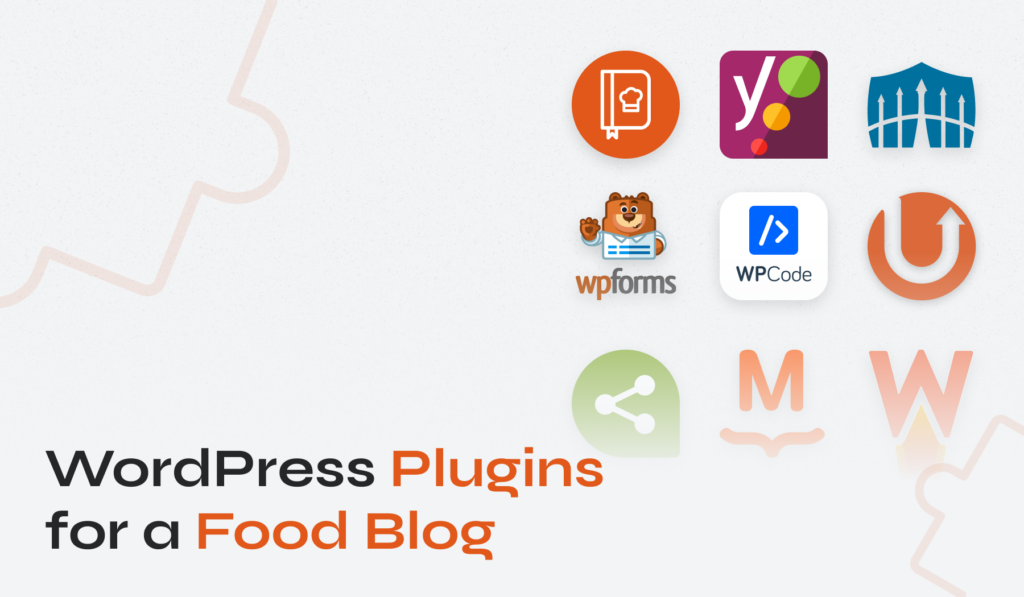
For every passionate food blogger, having the right tools can make all the difference in sharing your culinary adventures with the world. WordPress, a versatile and user-friendly platform, offers an array of plugins designed to enhance the functionality and appearance of food blogs. These plugins can simplify recipe posting, improve SEO, and enhance visual appeal, making your blog more attractive and accessible to your audience.
This guide will introduce you to the best WordPress plugins for food blogs.
10 Best WordPress Plugins for a Food Blog: Quick Look
- Recipe Card Blocks – The Best Recipe Plugin
- Yoast SEO – Best for SEO
- Wordfence – Best for Security
- WP Rocket – Best for Speed Optimization
- UpdraftPlus – Best for Backups
- Akismet – Best for Spam Prevention
- WPForms – Best for Forms
- WPCode – Best for Adding Custom Code
- MailPoet – Best for Newsletters
- Social Icons Widget & Block by WPZOOM – Best to Add Social Media Icons
Recommended WordPress Plugins for Food Blogs: In-Depth Reviews
Navigating the vast sea of WordPress plugins can be overwhelming. The plugins listed here are specifically chosen for their unique benefits to food bloggers, aiming to enhance your website’s appeal, functionality, and reach.
1. Recipe Card Blocks – The Best Recipe Plugin
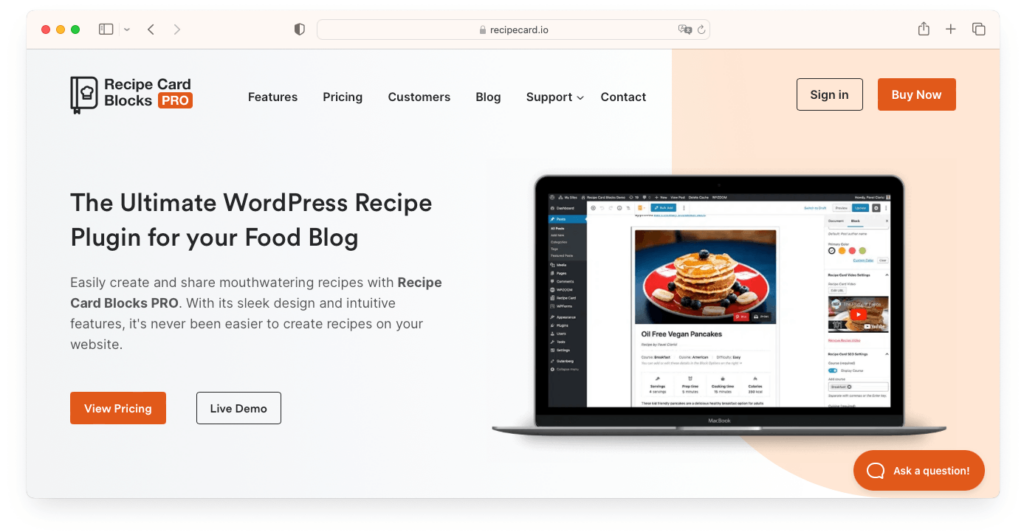
Recipe Card Blocks is a plugin designed for food bloggers who want to showcase their recipes in an attractive, easy-to-read format.
The plugin offers a variety of templates and customization options. This flexibility allows you to match the design of your recipe cards with your blog’s overall look and feel. Presenting recipes in a visually appealing way is critical to capturing the attention of your audience.
The recipe cards created with Recipe Card Blocks are not only about looks but also about functionality. They make it easy for your readers to follow along with your recipes. Features like adjustable serving sizes and print-friendly options enhance the user experience.
Recipe Card Blocks favorably structures the recipes for search engine optimization (SEO). It uses schema markup, which helps search engines understand and display your recipes in search results. This can mean displaying star ratings, preparation times, and even calorie counts directly in search results, making your posts more appealing to potential readers.
This recipe plugin includes options for readers to rate your recipes and leave comments. This interactive feature encourages reader engagement, which is vital for building a community around your food blog.
Despite its advanced features, Recipe Card Blocks is user-friendly. You don’t need to know coding to create stunning recipe cards. This ease of use is crucial for food bloggers who want to focus more on their content and less on technical aspects.
2. Yoast SEO – Best for SEO
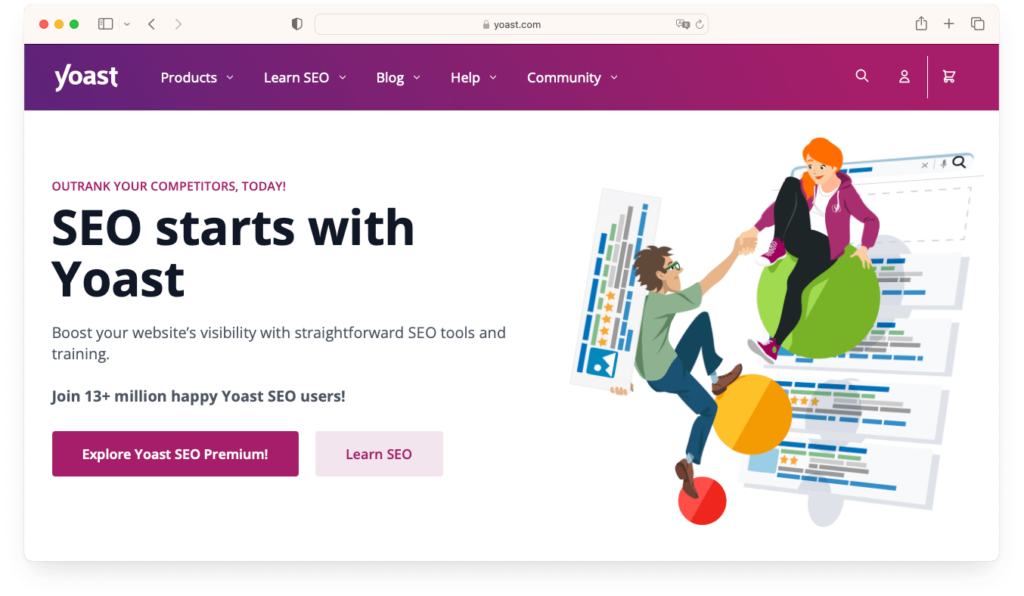
Yoast SEO provides real-time feedback on your post’s SEO and readability. It suggests improvements like keyword density, meta descriptions, and title length. For a food blogger, this means your recipe posts are not only captivating but also optimized to rank higher in search results.
This WordPress plugin helps ensure your content appears correctly in search results with features like XML sitemaps and schema implementation.
Yoast SEO suggests relevant internal links, which is a crucial factor for SEO. This helps food bloggers create a better-structured website, allowing readers to navigate between recipes and related content effortlessly.
The plugin allows you to preview and customize how your posts will look when shared on social media platforms. For food bloggers with highly visual content, this feature ensures you will adequately display your mouth-watering images on platforms like Facebook and Instagram.
Beyond SEO, Yoast also analyzes the readability of your content. It encourages short sentences, transitional phrases, and an active voice, making your recipes and blog posts more engaging and accessible to a broad audience.
3. Wordfence – Best for Security
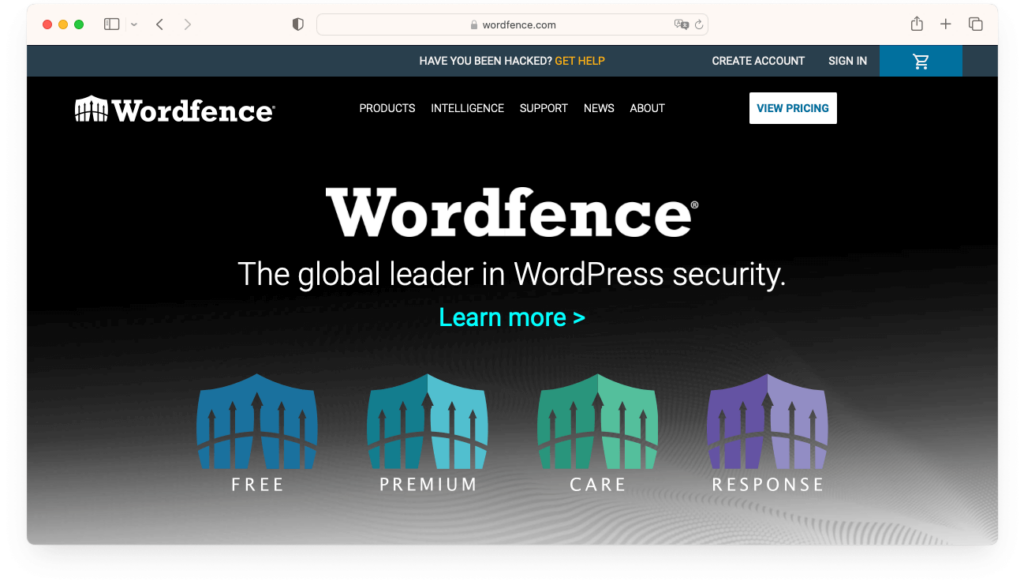
Wordfence is an indispensable security plugin for WordPress food blogs.
Wordfence includes a powerful firewall that identifies and blocks malicious traffic. For food bloggers, this means protecting your site from hacking attempts, which is crucial for safeguarding your recipes, blog posts, and subscriber information.
This WordPress plugin features an integrated malware scanner that checks your WordPress site for malware, bad URLs, backdoors, SEO spam, and malicious redirects. Ensuring that your site is clean and secure from these threats is essential for maintaining the trust of your audience and the integrity of your content.
Wordfence enhances login security with features like two-factor authentication (2FA) and login attempt limits. This adds an extra layer of security, preventing unauthorized access to your WordPress dashboard.
The plugin has a threat defense feed that keeps it updated with the latest firewall rules, malware signatures, and malicious IP addresses. This real-time protection is vital as it safeguards your site against the newest threats.
Despite its comprehensive security measures, Wordfence is efficient and doesn’t slow down your site.
4. WP Rocket – Best for Speed Optimization
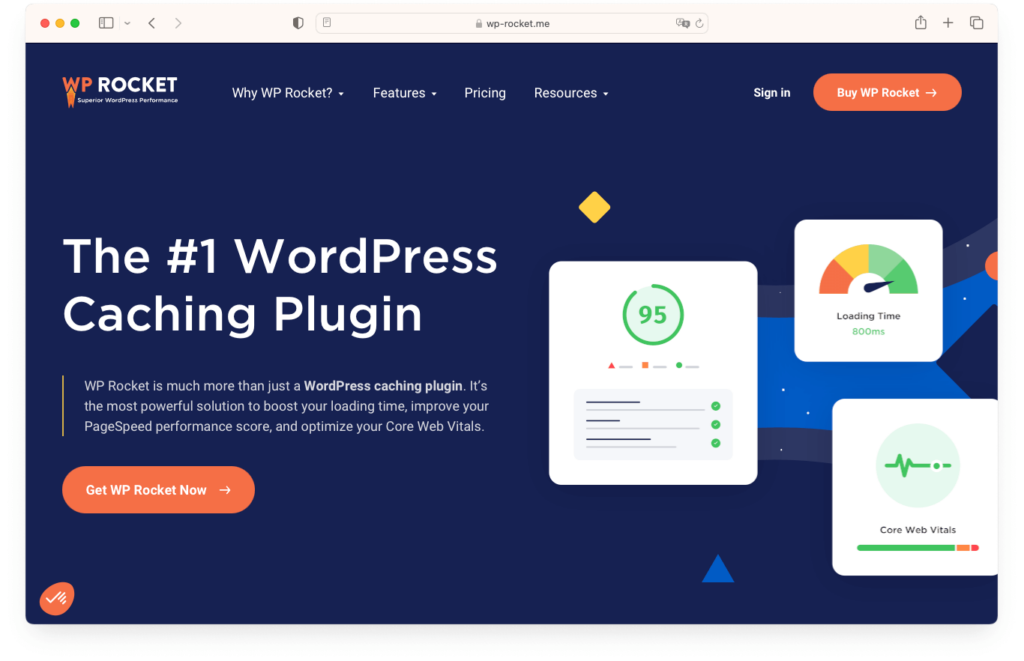
WP Rocket is a plugin primarily focusing on enhancing WordPress website speed and performance.
Food blogs are typically image-heavy, given the need to display high-quality photos of recipes and food. WP Rocket significantly improves loading times by caching pages, meaning your delicious photos and content load quickly for visitors. Fast loading times are not just about user convenience; they also impact your search engine rankings.
WP Rocket has features for lazy loading images, where images load as they’re about to be viewed on the screen. This is particularly useful for a food blog, as it ensures that your high-resolution images do not slow down your site, enhancing the user experience without compromising quality.
This plugin reduces the size of your HTML, JavaScript, and CSS files through minification. Smaller files mean faster loading times, which is critical for keeping your readers engaged. No one likes to wait for a slow website, especially when they’re eager to check out a new recipe.
WP Rocket can clean up your database by removing unnecessary data like post revisions and drafts.
5. UpdraftPlus – Best for Backups
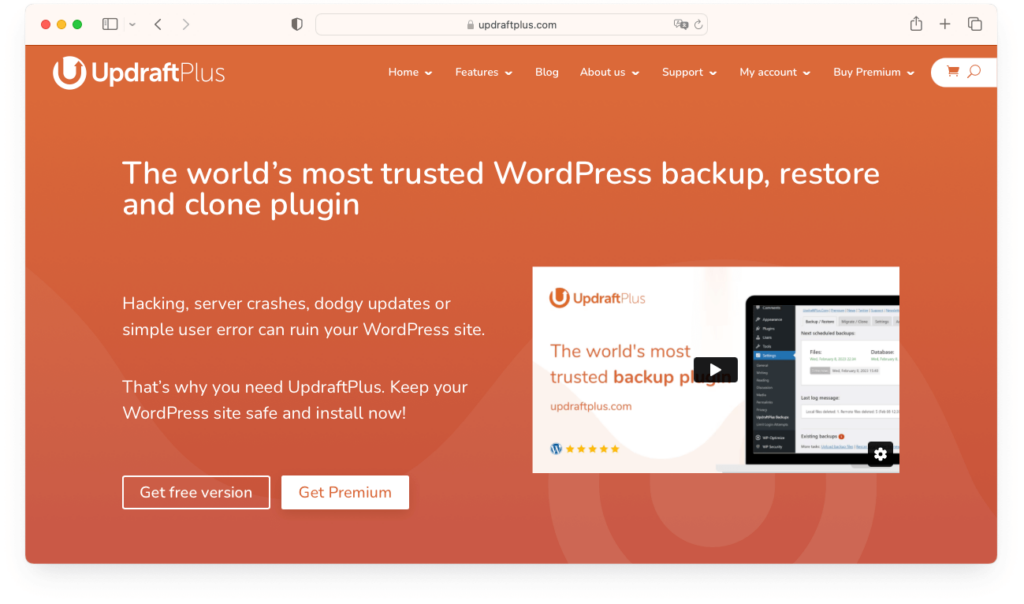
UpdraftPlus is an essential plugin for food blogs when creating backups.
As a food blogger, you constantly add new content, recipes, and images. UpdraftPlus allows you to schedule regular backups automatically. This means it will consistently back up your latest blog posts, recipes, and site changes without you remembering to do it manually.
UpdraftPlus offers straightforward options to restore your site from a backup in case of a website issue. This is crucial as it minimizes downtime and ensures your followers can always access your recipes and content.
UpdraftPlus supports multiple cloud storage options like Dropbox, Google Drive, and Amazon S3, allowing you to store your backups safely offsite. This is important as it ensures your data is safe even if your website encounters problems.
You can choose what to back up – whether it’s just your database, your themes, or your plugins.
6. Akismet – Best for Spam Prevention
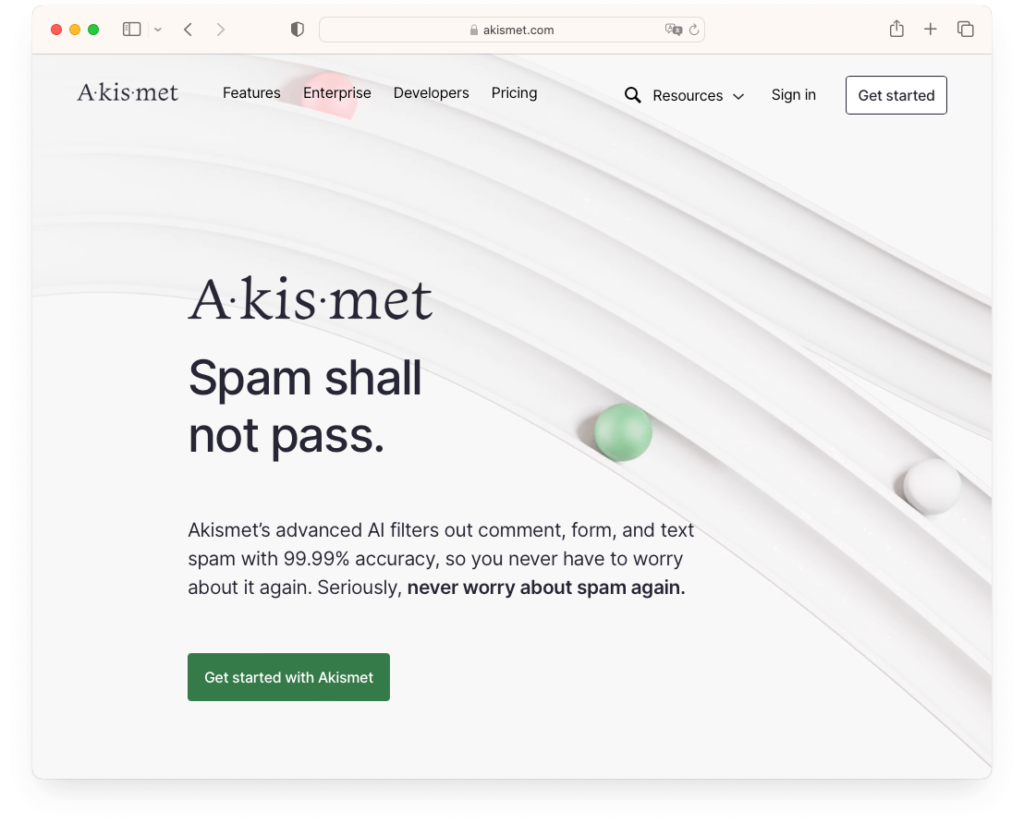
Akismet is a critical plugin for maintaining food blogs’ integrity and user experience.
Akismet automatically checks all comments and contact form submissions against its global spam database. By filtering out spam, Akismet keeps the conversation on your food blog genuine and relevant.
Spam comments can be off-putting to authentic readers and harm your food blog’s credibility. Akismet ensures that spam does not get published, maintaining the professionalism and trustworthiness of your site.
Manually checking comments for spam is time-consuming. Akismet automates this process, freeing up your time to focus on creating content, experimenting with new recipes, and engaging with your authentic audience.
Unlike some anti-spam plugins, Akismet does not store personal information from your blog’s visitors, which is essential in today’s privacy-conscious online environment.
7. WPForms – Best for Forms
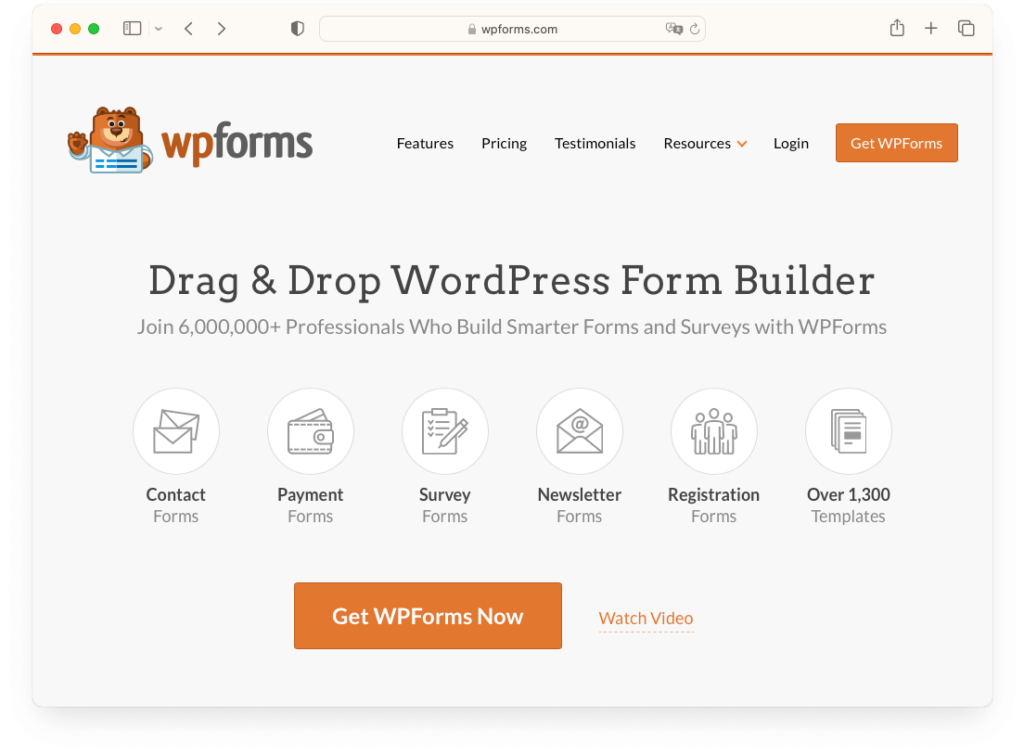
WPForms allows you to create contact forms easily, enabling your readers to contact you. It opens a direct line of communication with your audience, whether they have questions about a recipe or partnership inquiries.
The plugin makes it simple to integrate newsletter sign-up forms into your food blog. This is an excellent way for food bloggers to grow their subscriber base and keep their audience informed about new recipes, blog posts, or upcoming events.
WPForms offers a drag-and-drop builder, making creating functional and aesthetically pleasing forms without coding knowledge easy. Plus, the forms are responsive, meaning they work well on desktop and mobile devices – essential since many readers may access your food blog on the go.
You can create surveys and polls, which are great tools for engaging with your audience. For a food blogger, this might mean getting feedback on what recipes your readers want to see next or understanding their dietary preferences.
WPForms supports integration with payment platforms and booking tools. This is particularly useful if you offer cooking classes, sell cookbooks, or have any merchandise related to your food blog.
8. WPCode – Best for Adding Custom Code
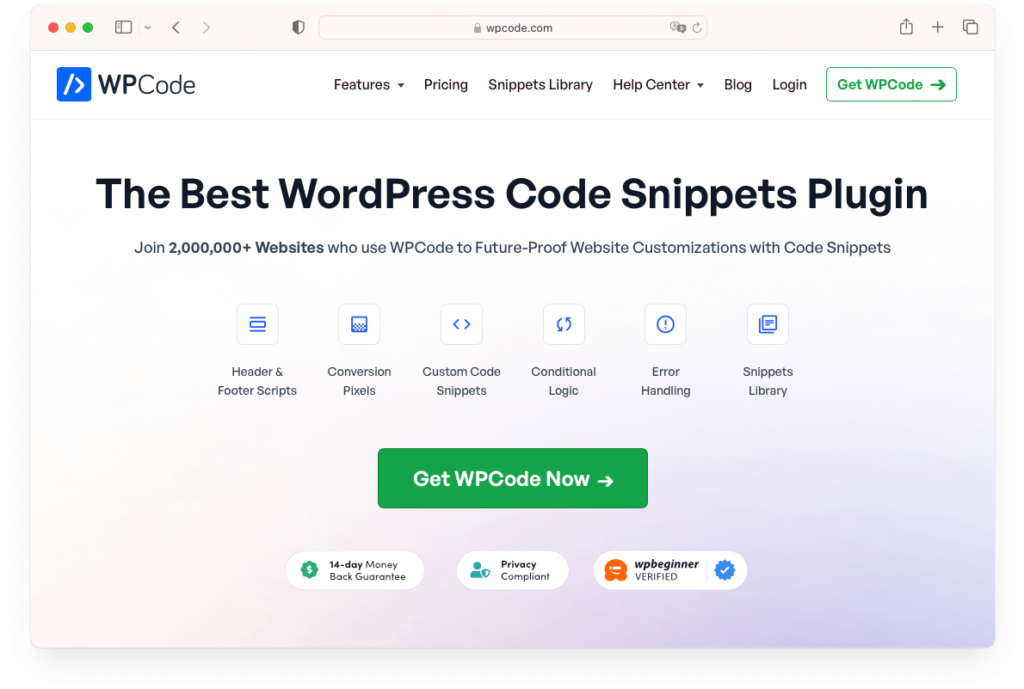
WPCode allows you to insert custom HTML, CSS, or JavaScript directly into your site. This means being able to add unique features or styles to your food blog without needing to understand coding deeply.
You might want to add custom widgets, like a dynamic recipe index or a unique display for your most popular recipes. WPCode makes this possible, enhancing your blog’s visual and functional elements that go beyond standard WordPress themes and plugins.
With WPCode, you can add code that improves the user experience, like custom scripts for interactive elements or specific animations that make your site more engaging. WPCode is excellent for inserting tracking codes, like Google Analytics or SEO-related scripts, helping you gather data on your site’s performance and reach.
One of the risks of adding custom code is potentially breaking your site. WPCode mitigates this risk by providing a safe environment to add and test code. If something doesn’t work as expected, you can quickly revert the changes, ensuring your food blog remains operational.
9. MailPoet – Best for Newsletters

MailPoet is a significant plugin for food bloggers focusing on email marketing and subscriber engagement.
MailPoet allows you to create beautiful, engaging newsletters directly within your WordPress dashboard. For food bloggers, this means effortlessly sharing your latest recipes, blog updates, or cooking tips with your subscribers.
The plugin integrates with your WordPress site, enabling you to send out newsletters automatically whenever you publish a new post. MailPoet helps you manage your subscribers effectively. You can segment your audience based on their preferences, which is invaluable for food bloggers who cater to diverse dietary needs and interests (like vegan, keto, gluten-free, etc.).
The plugin provides insights into how your newsletters perform, with data on open rates, click rates, and subscriber growth.
10. Social Icons Widget & Block by WPZOOM – Best to Add Social Media Icons
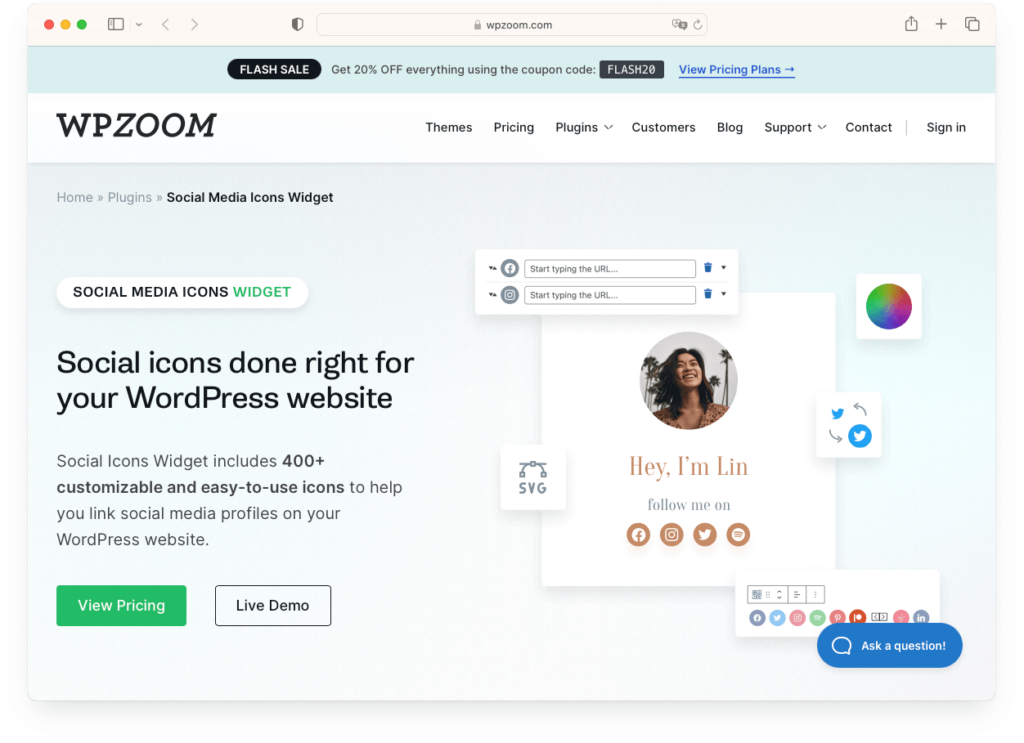
Social Icons Widget & Block by WPZOOM allows you to effortlessly add social media icons to your website. For food bloggers, social media is crucial for sharing content, engaging with followers, and growing your audience. Adding these icons makes it easy for your readers to find and follow you on various social platforms.
The plugin offers a range of customization options, allowing you to match the style and colors of the icons with your blog’s design. You can place these icons in various locations on your site, like headers, footers, or sidebars, ensuring they are visible but not intrusive.
Prominently displaying your social media icons encourages readers to connect with you on these platforms. This can lead to increased followers and more engagement on your social media posts, which is particularly beneficial for expanding your food blog’s reach.
The plugin supports a wide array of social networks. This means you can promote your presence across different platforms, from mainstream ones like Instagram and Facebook to more niche culinary-focused networks.
The plugin is easy to use. You don’t need technical skills to add and customize the social media icons, making the plugin accessible to all food bloggers, regardless of their technical proficiency.
Bottom Line
Choosing the right plugins can significantly elevate your food blogging experience and your audience’s engagement with your content. These 10 plugins offer a blend of aesthetics, functionality, security, and connectivity, making them indispensable tools for any food blogger in 2024.